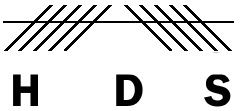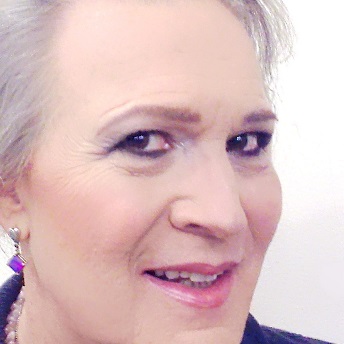jlh 2019, 10/13/24

Jessie Lydia Henshaw – Natural Systems Design Science
RNS – www.synapse9.com/signals –
sy@synapse9.com – Google Scholar Page
HDS is a center for research and consulting on patterns of organization and design found in and in working with how natural systems make life so lively.
In short, it’s a “systems biomimicry science,” demonstrating that we can finally better understand many of our most mysterious but also familiar complex natural designs and changes. Those include such life patterns as “contexts,” “growth,” “growing up,” and even “making dinner.” They are all names for commonly recognized complex system self-organization processes. They all also follow some variation in nature’s self-organizing continuities of changing designs and transformations of working systems. The simplest model is represented below, referred to generally as “nature’s integral,” a process of “start-up” and “finish-up” emerging from its surroundings.
An example of a new use for this view is helping us understand what to do about our civilization having a problem with the most critical stage of growth, “change of life,” going from “growth” to “growing up,” which is known as “birth,” when the purpose of growth changes from “forming a system” to “maturing a system.”
That makes the HDS approach closely related to common experience, as well as to ecology, general systems science, and the architectural practice of “pattern language” for creating holistic designs, though it originally came from how physics left a blank space in its theories for asking “what makes life so lively.” What describes that energizing creative process of life for physics is a “map” to guide anyone exploring their contexts for what’s going on, called “nature’s integral.” It identifies a universal succession of changing directions of sometimes visible emerging self-organization. The pattern is
1) Germination: designs emerging to grow in a sheltered context,
2) Takeoff: expanding with a burst of energy, capturing resources for growing their starting design,
3) The Turn (birth): choosing one of two growth paths:
a) tipping resources to conserve its future, maturing & responding
b) or keep multiplying its designs till they come apart as compost
4) Maturing: slowing growth for perfecting internal designs and external relations.
5) Graduation (2nd birth): When leaving its sheltered context to explore the environment and build its own context.
i ) A ‘context‘ is a network of local environment systems and relationships, a looser form system that every system is usually surrounded by.
ii) The crucial step is at the midpoint, where the positive feedback of ever-faster expansion (the red line) triggers an inversion of the system’s purpose, from just multiplying to developing cohesion as a system and making a life, turning to the feedforward period of maturation and new engagement of the blue line.

jlh 1/21/13, 4/9/16, 4/18/16, 19, 24

Jessie is currently active in supporting the evolution of sustainability thinking at the UN NGO Major Group and other organizations, making small but critically important accumulative steps toward a common recognition of our global problem, still hoping that 2020 will be “the year of clear vision.” The red line in the diagram would represent our ~250-year period of rapid global growth, and the blue line our perhaps next 250 years of learning what to do with it, as we refine our design for civilization for the coming climax phase of our life on earth, i.e., a ‘good’ thing to do.
So the starting point for any client with any large or small challenge to face, is to recognize nature’s integral in their ordinary experience, like making lunch, or pouring a drink, and then in bigger and more complex transformations too, such as starting and completing any office project, or leading a confused planet to safety. From a natural systems view the same general map of transformation is always where to begin exploring its many variations. The model is not magic, more of a suggestive notepad for a do-it-yourself plan, that keeps asking you “and then?” in a way that keeps your attention on the stages of the making any transformation whole. So it does not always work, of course, or follow a simple path, but when it works, it does always start a continuity of growing the parts then refining their purposes, to end at a point of completion and independent life.
Jessie is an independent physicist and architect who developed this as a new general science of systems ecology. It originated with field studies of the physics principles and evolving design patterns of emergent organization in nature, concentrated on the designs of convection. She’s been proposing ways for the economic system to transform and become sustainable since discovering in the 1970’s the close corollary between energy in nature and money in the economy, and then finding that Keynes discovered the same principle, which he called “the “widow’s cruse.” Her discovery that you could (and should) think of natural systems as working by themselves was what opened the door. That profound shift in perspective, to considering nature as working by itself rather than by our information, led to many verifiable and useful discoveries that differ from expectation.
Seeing nature as working by itself, not by our information, leads to applying science in a new way. Scientific inquiry then starts from recognizing nature’s flows as evidence of environmental organization rather than the opposite, taking all data out of context to use for creating equations and representing the equations as nature’s organization. It’s a difference between studying nature’s things and studying our own rules. One developed technique is the adaptation of Christopher Alexander’s “pattern language” as a language of design for holistic environmental transformations.
Jessie’s work is published in research papers, her RNS journal of research reports, and her archive of experiments. She was born in 1946, growing up in Hamilton NY, and now lives in New York City. She received a 1968 B.S. in physics from St. Lawrence University, followed by some postgraduate study in mathematics at Stony Brook and Columbia, and then a 1974 MFA from the Univ. of Pennsylvania in architecture, landscape, and micro-climate design. Her many years of independent research then began when moving to Denver and making her first important findings studying the natural micro-climates of homes. She has since continued to accumulate a body of useful new work.
